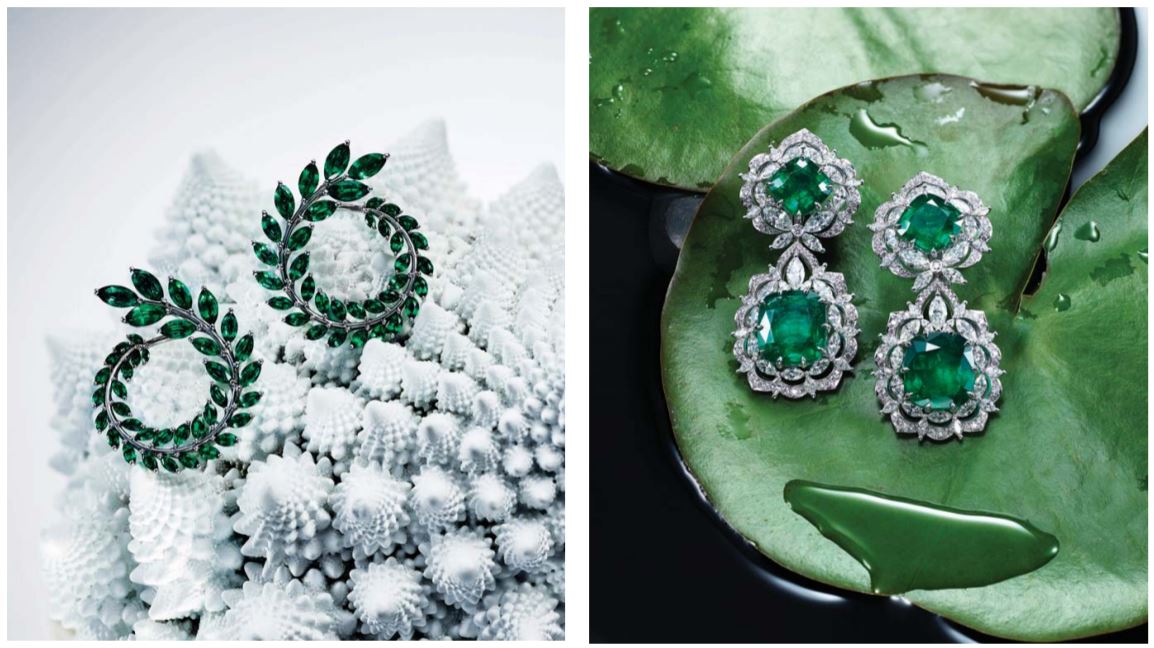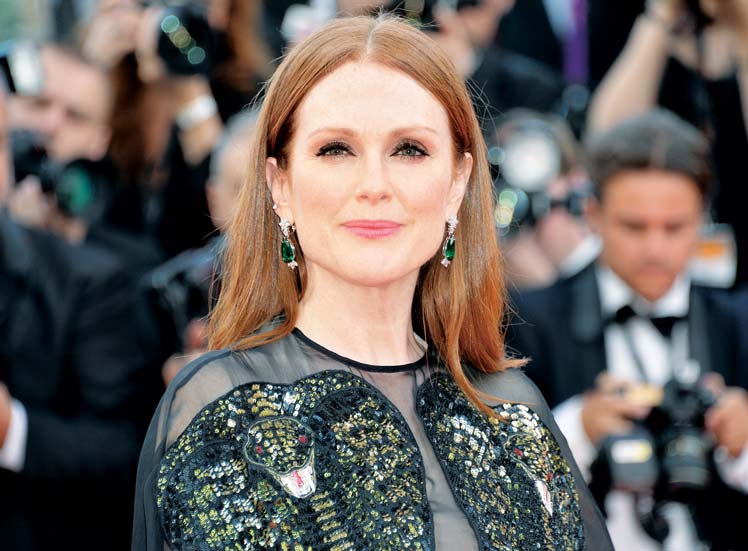It is this intrepid spirit and desire to always push the envelope that has come to define Scheufele’s legacy at Chopard, and her bravest decision so far has been the push for the ethical sourcing and mining of gold and gemstones that she undertook five years ago. The story of how she started Chopard’s journey to sustainability has often been repeated, but here’s a refresher: She met Livia Firth, whose actor husband Colin Firth was nominated for the movie The King’s Speech, at the 2011 Oscar’s. Over coffee, Firth asked her: “Where does your gold come from?” A seemingly innocent question, if Firth had not been the founder of Eco-Age, a sustainability consultancy. The conversation prompted Scheufele to dig deep into the issue, and she found out the challenges and dire conditions that mining communities faced.
Her first order of business was to start sourcing for Fairmined gold. “The biggest hurdle from the start was to transmit this vision to all our employees, because we couldn’t do it on our own, and everyone had to stand behind the cause... When the first couple of kilogrammes of Fairmined gold arrived, that gold never touched the traditional gold. It went through the workshops like a VIP client,” Scheufele recounts.
That was five years ago and the brand finally reached its goal of using only ethically mined gold across all its product lines in July this year. The end consumer bears no additional cost as Chopard absorbs the expenses incurred from sourcing only from mines that comply to the Fairmined and Fairtrade guidelines. “The cost of mining ethical gold is maybe 5% or 10% more expensive, and it’s absorbed as a marketing cost,” Scheufele confirms.
Nonetheless, despite the strides that Chopard has been making on its journey to sustainability, in February, watchdog Human Rights Watch published a report about the sourcing practices of 13 leading jewellers, and placed Chopard close to the bottom of the list. When we ask Scheufele about this report, she responds, “I don’t know why, we should be on top! I know they contacted us very much at the end of the process, and the questions were provocative. We were obviously not going to give away secrets of how we produce things; there are limits to [disclosing] some of our processes in production. But I can guarantee you that Chopard should be at the top of the list.”
Nonetheless, despite the strides that Chopard has been making on its journey to sustainability, in February, watchdog Human Rights Watch published a report about the sourcing practices of 13 leading jewellers, and placed Chopard close to the bottom of the list. When we ask Scheufele about this report, she responds, “I don’t know why, we should be on top! I know they contacted us very much at the end of the process, and the questions were provocative. We were obviously not going to give away secrets of how we produce things; there are limits to [disclosing] some of our processes in production. But I can guarantee you that Chopard should be at the top of the list.”

The Green Carpet Collection features jewellery made from ethically mined materials.
But the truth of the matter is that ensuring the ethical mining of gold and gemstones is a complex and tricky process. It requires the jeweller to be involved in every part of the supply chain, ensuring that there are no cracks in the line from mining to cutting to sourcing. “It’s a huge jungle, and we’re starting only at one little end,” Scheufele says. “We work with a lot of organisations, and people are trying to put regulations in place. It’s going to take a lot of time and I cannot give you a time frame for when this will be fixed. It’s not an easy solution. There are so many different countries from Brazil to Cambodia and India, where you face different cultures, and old ways of doing things. It’s really about changing people’s minds.”
While debilitating bureaucracy and fixed mindsets are dire challenges, there is no denying the fact that Chopard’s journey to sustainability is a noble one: the ethical stamp on the gold that it uses reassures conscious customers that the mines are not manned by children who should be in school. The mines are also regularly checked for security purposes, so there is a lower risk of miners being trapped underground. The miners are promised a fixed salary, instead of the previous practice of only getting paid when they discovered something. Moreover, these guidelines protect the environment by ensuring that no mercury — the toxic material used to extract gold — is dumped into the rivers or within the soil.
Using Fairmined gold was the first step; Scheufele has extended this quest for ethical raw materials to gemstones as well. In 2016, the brand entered a partnership with Gemfields, a UK-based mining and marketing company that specialises in coloured stones. The results so far have been optimistic, as the diamonds, emeralds, opals and Paraíba tourmalines being used by Chopard are all ethically sourced, and the partners are now working to ensure the same for other stones.
“It’s been a long way, but I think we have achieved a lot in a short time,” muses Scheufele. “But the journey is not finished, we still have a lot of materials we want to work with. Mines [are located in] many different countries, so it’s not just a journey in time, but also a journey of going to the countries, talking to governments. Independent organisations such as Gemfields tell them that maybe things can be done a little differently. It’s still a big challenge.
“A couple of years down the road, I hope that I can look back and reach that goal and truly say that luxury is transparent.”
“A couple of years down the road, I hope that I can look back and reach that goal and truly say that luxury is transparent.”

Julianne Moore wore earrings from the Green Carpet Collection at the Cannes Film Festival in 2016.
Bold strides
Scheufele’s audacious decision to embark upon this journey was supported by the fact that Chopard is managed and owned by her family. She says, “It was easier because first of all, we’re 100% family-owned and, second, we’re based in Switzerland, and it’s one of the most forward-looking countries when it concerns sustainability, ethics and human rights.”
While she is in charge of the brand’s women’s universe, her brother, Karl-Friedrich — soft-spoken to his sister’s spirited nature — manages the men’s watches category. “He is very much behind the same initiative as I am,” she says. Still, working with family can be challenging, but Scheufele dismisses it succinctly: “The company is big, there’s a lot of work for the both of us.”
Handling the creation of the annual Red Carpet high jewellery collection — and within it, the Green Carpet Collection, which features jewellery made from ethically mined materials — is one of the main projects that she manages. Launched every year during the Cannes Film Festival and worn by some of the most stunning stars in the world, the high jewellery collection is yet another testament to Scheufele’s bold vision. Chopard is one of the only high jewellery maisons to use titanium in its high jewellery creations, and this year, the highlight of its Red Carpet collection was without a doubt a cameo pendant attached to a choker made with rooster, grey heron, ostrich and black pheasant feathers.
“High jewellery doesn’t have to be old fashioned and dusty,” says Scheufele “It was, for a long time, considered to be only about the four precious stones — diamonds, rubies, sapphires and emeralds — and set in platinum or gold. But nowhere is it written that this is the limitation to it. There is so much more out there; mixing precious stones with other metals makes the piece more daring, interesting and unusual.”
From leading the charge in sustainable practices to pushing the creative boundaries of high jewellery and even partnering with pop culture rebels such as Rihanna, Scheufele’s confidence and her desire to drive change are truly refreshing in an industry where tradition is so revered.
Formerly a deputy editor at a local magazine, Karishma Tulsidas is deeply entrenched in the worlds of watches and jewellery, but loves the thrill of diving deep into and writing about hitherto unknown subjects.
This article appeared in Issue 856 (Nov 12) of The Edge Singapore.
Subscribe to The Edge now




